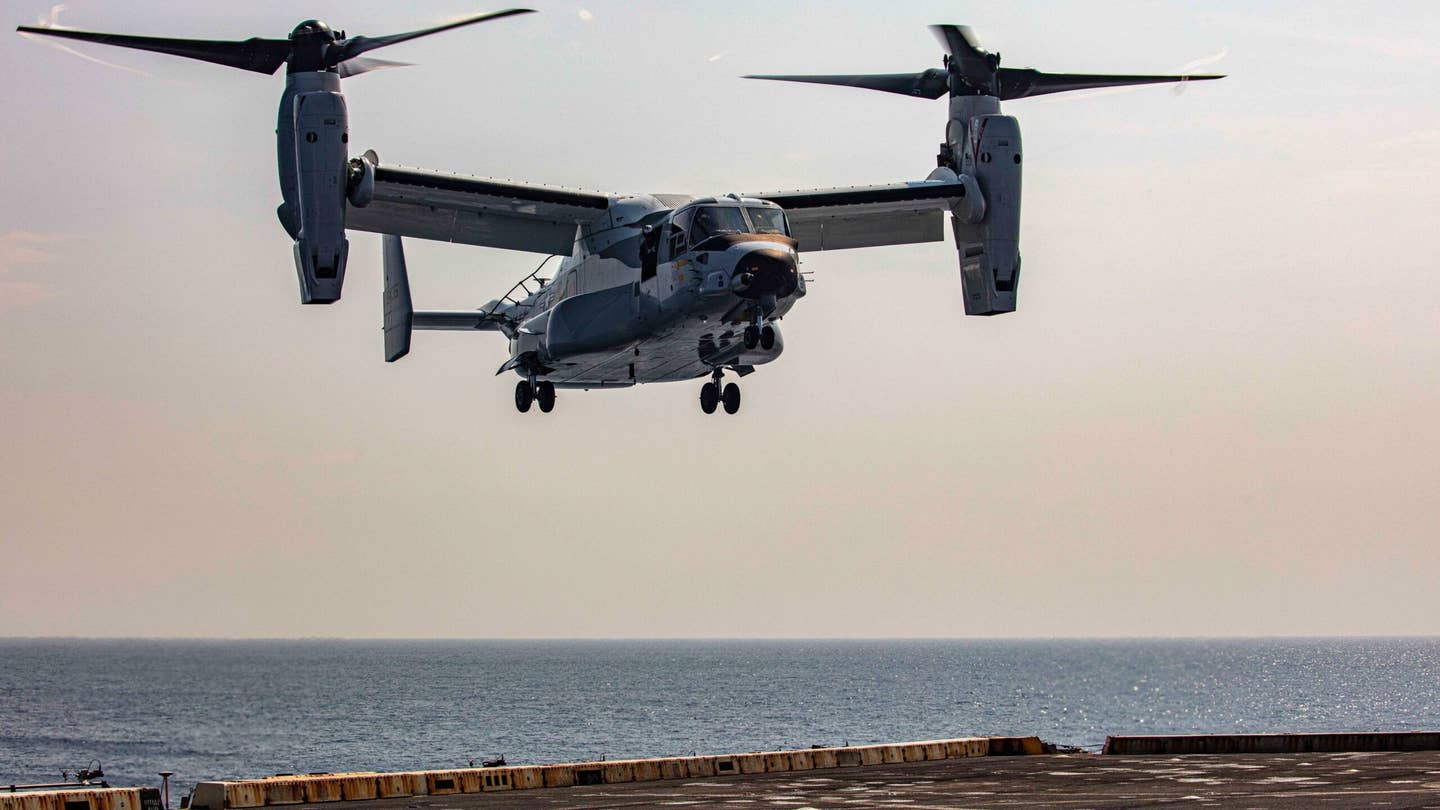U.S. Navy Announces Key Milestone For V-22 Variant
The CMV-22B Osprey is operationally ready after the service completed its first deployment with the aircraft last week, the Navy said.

An CMV-22B Osprey, attached to the Blackjacks of Air Test and Evaluation Squadron Two One (HX-21), lands on the flight deck aboard the amphibious transport dock ship USS New York (LPD 21), July 18, 2020. [Courtesy: Naval Air Systems Command]
The U.S. Navy declared the CMV-22B Osprey—its tiltrotor vertical and/or short takeoff and landing aircraft variant—had reached initial operational capability (IOC) after the service completed its first deployment with the aircraft last week.
“The CMV-22's maiden deployment with Carrier Air Wing (CVW) 2 and the [USS Carl] Vinson (CVN 70) team is an operational success, giving me the confidence necessary to make the declaration,” Rear Adm. Andrew Loiselle, Director, Air Warfare Division, N98, Office of the Chief of Naval Operations, said in a statement. “As we continue to deliver the advanced platforms that will make up the Air Wing of the Future, the CMV-22B provides the necessary support and more to carry our future force.”
According to the Navy, the first CMV-22B detachment that deployed on the USS Carl Vinson reported a 98 percent mission completion rate and a mission capable rate of 75 percent, according to the service.
The IOC designation is considered a key milestone in the CMV-22B program, which is slated to reach full operational capability in 2023, according to Naval Air Systems (NAVAIR) Command.
The Navy is expected to purchase 44 of the Bell-Boeing V/STOL aircraft capable of transporting three tons of cargo and personnel for the primary function of transporting personnel, mail, supplies and high-priority cargo from shore bases to carriers at sea. The Navy variant is an enhanced version of the U.S. Marine Corps MV-22B variant, with an extended operational range, a beyond line-of-sight high-frequency radio, improved fuel dump capability, as well as improved lighting for cargo lighting.
It's the aircraft's lift, however, that makes it an integral part of service plans for carrier air wing deployments, according to the service.
"The CMV-22B is a crucial element of future carrier airwings due to the cargo capacity needed to transport F-35 power modules and additional logistics support for future carrier air wing deployments with next-generation platforms," the Navy said in a statement.
“IOC designation is more than a stamp of approval,” U.S. Marine Corps Col. Brian Taylor, V-22 Joint program manager, said in a statement. “It is a vote of confidence from top Navy leadership that the design, testing and production of this aircraft meet the logistical needs of the carrier air wings designated to fly the CMV-22B.”

Sign-up for newsletters & special offers!
Get the latest FLYING stories & special offers delivered directly to your inbox






